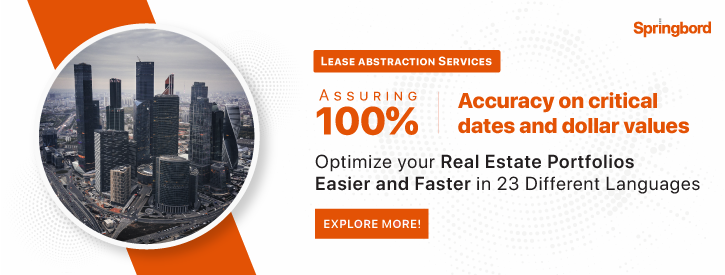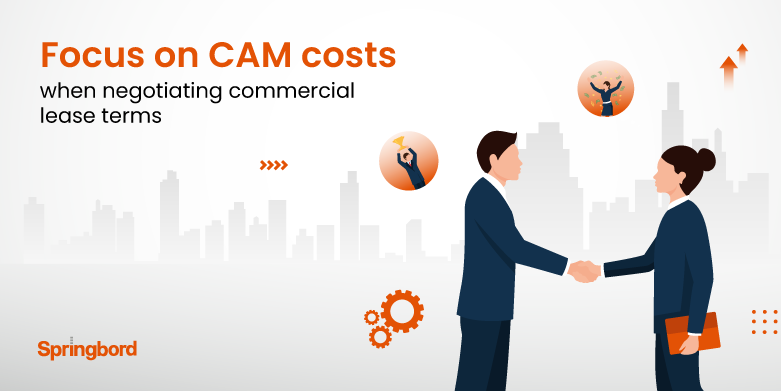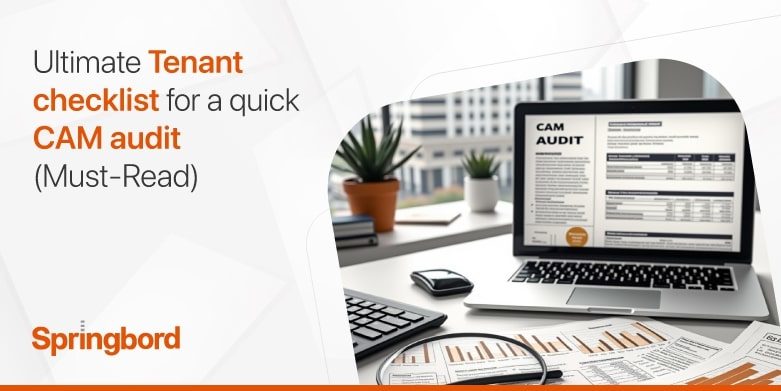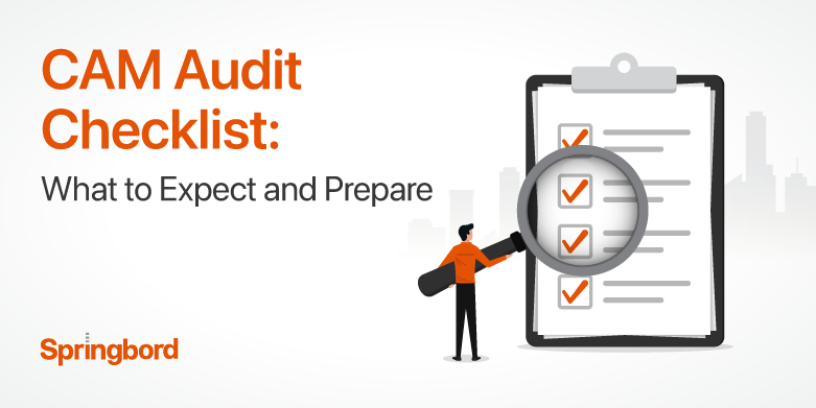 Read time 5 min
Read time 5 minAs businesses evolve and the landscape of commercial real estate becomes more complex, the importance of Common Area Maintenance (CAM) reconciliation grows. CAM charges are the costs associated with maintaining and operating common areas in commercial properties, shared by tenants and managed by landlords.
These charges can include everything from utilities and janitorial services to snow removal and landscaping. But why is CAM reconciliation critical, and what does it entail? Let’s dive in.
Understanding CAM Reconciliation
CAM reconciliation is the process of verifying and adjusting the estimated CAM charges paid by tenants throughout the year against the actual expenses incurred. This process ensures that tenants are paying their fair share of the operating costs and that landlords are not overcharging or undercharging for the maintenance of the property.
The process can be intricate and requires meticulous attention to detail. According to the Compliance Audit Manual, a compliance audit, like CAM reconciliation, involves a systematic review and evaluation of financial information to determine whether it complies with the established criteria, which in this case, are the lease agreements and the actual maintenance expenses.
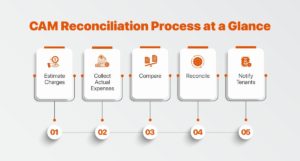
In many cases, CAM reconciliation highlights discrepancies that may go unnoticed without a formal audit process. Small errors in expense allocation, prorated calculations, or categorization can quickly compound across multiple tenants, leading to significant overcharges or undercharges. A properly conducted audit not only protects financial interests but also ensures regulatory compliance and improves overall lease administration practices.
The Importance of CAM Reconciliation
CAM reconciliation is not just a financial formality; it is a critical component of property management that affects both landlords and tenants:
- Transparency and Trust: Regular CAM reconciliations promote transparency between landlords and tenants. It builds trust when tenants know they are only paying for what they owe.
- Financial Accuracy: It ensures financial accuracy and prevents disputes over charges, which can be costly and time-consuming to resolve.
- Budgeting and Forecasting: For tenants, understanding CAM costs is essential for budgeting and forecasting. It allows them to anticipate their expenses accurately and plan their finances accordingly.
- Protecting Rights and Interests: Both parties are protected when CAM reconciliations are performed regularly. Tenants are assured they are not overpaying, and landlords can justify the charges.
Additionally, timely CAM reconciliations can reveal opportunities for cost optimization and operational efficiencies. For property managers, reconciling charges and expenses annually allows better management of vendor contracts, service costs, and operational budgets for upcoming years. For tenants, it offers a clear understanding of occupancy costs and potential areas for negotiation in future lease renewals or amendments.

The CAM Audit Checklist for Lease Administrators
For lease administrators, conducting a CAM audit can be a daunting task. However, a checklist can streamline the process. A comprehensive CAM audit checklist for lease administrators should include:
- Reviewing the lease agreement to understand the CAM provisions.
- Examining invoices and receipts related to CAM expenses.
- Ensuring all expenses are legitimate and comply with the lease terms.
- Calculating the pro-rata share of each tenant based on the lease agreement.
- Preparing a detailed report of the actual CAM expenses for each tenant.
It’s also important for lease administrators to maintain an organized audit trail of all supporting documents. This includes historical CAM statements, vendor contracts, service agreements, and maintenance logs. Having these documents readily accessible simplifies the audit process and strengthens the audit report in the event of disputes.
A Quick CAM Audit Checklist for Tenants
Tenants also need to be proactive in understanding and verifying CAM charges. A quick CAM audit checklist for tenants includes:
- Requesting a detailed CAM statement from the landlord.
- Comparing the statement against the lease terms.
- Verifying the accuracy of the expenses listed.
- Checking for any discrepancies in the pro-rata share calculation.
- Discuss any concerns or discrepancies with the landlord.
Tenants should also consider maintaining their own records of property issues, maintenance requests, and service delivery inconsistencies. This internal documentation can be invaluable when cross-verifying CAM charges, especially in cases where service levels do not appear to match billed amounts.
The Role of Service Providers in CAM Reconciliation
While landlords and tenants can undertake CAM reconciliation themselves, the process can be complex and time-consuming. This is where CAM reconciliation service providers like Springbord come into play.
With expertise in financial services and property management, service providers can offer invaluable assistance in ensuring accurate and efficient CAM reconciliations.
Service providers can handle the detailed review of expenses, calculations of tenant shares, and preparation of reconciliation reports. They can also provide insights into industry best practices and help navigate the complexities of lease agreements.
Outsourcing CAM audits to professional firms ensures independent, unbiased review and reduces the administrative burden on in-house teams. These firms bring specialized tools, audit checklists, and software systems that expedite reconciliation processes while identifying inconsistencies that might otherwise be missed. Their involvement is particularly beneficial in multi-tenant commercial properties where complex lease structures and prorated charges can create reconciliation challenges.
Common Mistakes to Avoid During CAM Audits
While following checklists is essential, lease administrators and tenants should be mindful of common mistakes during CAM reconciliation audits:
- Overlooking lease amendments and special clauses.
- Ignoring capped CAM provisions or excluded expenses.
- Not verifying vendor invoices or service logs.
- Relying solely on landlord-provided statements without independent verification.
- Delaying audits until after lease termination or statute of limitations expiry.
Being proactive and organized in the reconciliation process mitigates these risks and helps avoid financial losses.
Conclusion
CAM reconciliation is a vital process in commercial real estate that ensures fairness and accuracy in the distribution of property operating costs. It fosters a transparent relationship between landlords and tenants, aids in financial planning, and protects the interests of both parties.
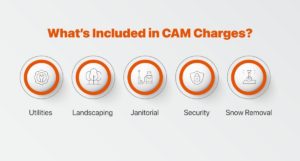
For lease administrators and tenants, adhering to a CAM audit checklist is crucial for a smooth reconciliation process. However, the expertise of service providers like Springbord can be a game-changer, offering peace of mind and professional assurance that the reconciliation is conducted thoroughly and in compliance with all regulations and lease terms.
If you’re looking to streamline your CAM reconciliation process, reduce errors, and foster better landlord-tenant relationships, consider partnering with Springbord. We’re a team of experts equipped to handle the intricacies of CAM reconciliation, ensuring accuracy and compliance every step of the way.
Contact us today to learn more about how we can assist you with your CAM reconciliation needs and help you maintain a transparent, trustworthy, and financially sound property management system.
FAQ
What is CAM reconciliation?
CAM reconciliation is the process of comparing estimated CAM charges paid by tenants to the actual expenses incurred by the landlord.
Why is a CAM audit checklist important for lease administrators?
A checklist ensures every aspect of CAM expenses is reviewed systematically, preventing errors and disputes.
How can service providers help with CAM reconciliation?
Specialized service providers manage detailed expense reviews, calculations, and reporting to ensure accurate CAM reconciliations.
What types of expenses are typically included in CAM charges?
CAM charges usually cover shared property expenses like utilities, janitorial services, landscaping, and repairs.
Can tenants dispute CAM charges after paying them?
Yes, tenants can dispute CAM charges, but must act within the timeframe allowed by their lease and local regulations.
How often should CAM reconciliations be performed?
Most commercial leases require annual CAM reconciliations at the end of each fiscal or calendar year.
What documents should tenants request during a CAM audit?
Tenants should request detailed CAM statements, vendor invoices, maintenance logs, and a breakdown of expense calculations.



